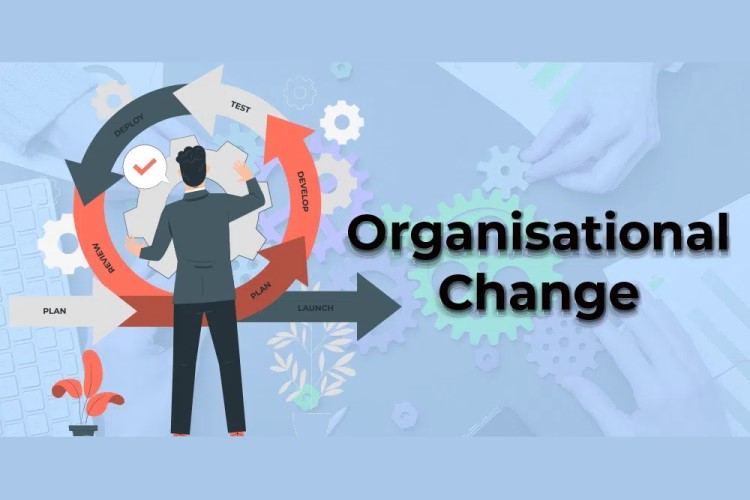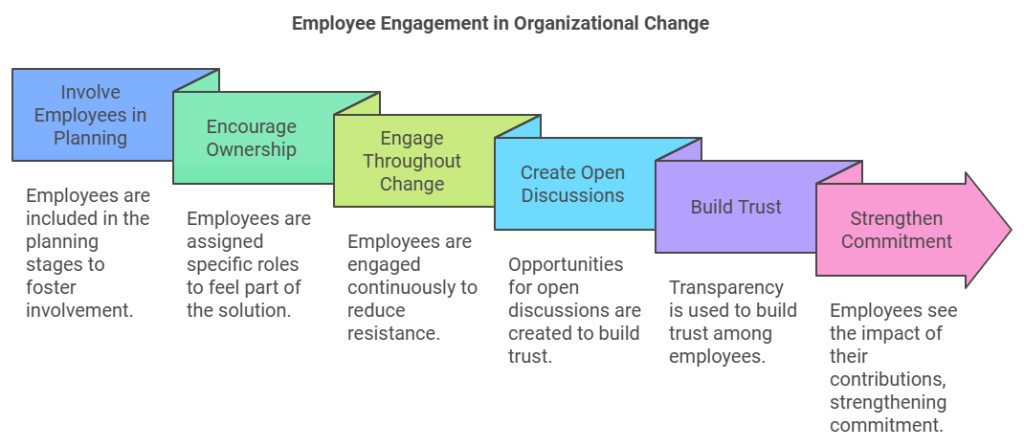
Understanding the Need for Change
Understanding the need for change is the first step in managing organizational change effectively. Change is often necessary because markets, technologies, and customer preferences evolve continuously. If your organization doesn’t adapt, it risks falling behind competitors who are responsive to these shifts. Keeping up with market trends allows your business to remain relevant and competitive, which is essential in almost every industry.
Technology advancements also drive the need for organizational change. New tools can improve productivity, streamline processes, and enhance customer experiences. Ignoring these advancements can make operations inefficient, leading to higher costs and missed opportunities. Embracing technology can position your organization as forward-thinking and improve overall performance.
Evolving customer demands further highlight the importance of change. Today’s customers expect more personalized and responsive service, which may require new strategies or systems. Meeting these expectations helps build loyalty and trust, which are important for long-term success. Recognizing these needs ensures your organization doesn’t stagnate but instead grows and adapts to changing external forces. Managing organizational change with these factors in mind helps your organization stay relevant and prepared for future challenges.
Creating a Clear Vision and Strategy
Creating a clear vision and strategy is essential when managing organizational change. A strong vision serves as a guiding light, helping everyone understand the purpose behind the change. When you define a vision, you set a clear direction, which reduces confusion and aligns everyone with the same end goal. This clarity can boost motivation and engagement, as employees see how the change benefits the organization and their roles.
Setting specific goals is equally important in making the vision actionable. Goals break down the larger vision into achievable milestones, allowing you to measure progress along the way. Goals should align with the organization’s overall objectives, ensuring that the change strengthens your core mission. By setting these measurable targets, you create a structured approach that helps track achievements and identify any needed adjustments.
A roadmap outlines the steps needed to reach each goal. It provides a timeline, assigns responsibilities, and sets priorities, keeping everyone on track. A well-structured roadmap also allows you to anticipate challenges and allocate resources effectively. By creating a clear vision, defined goals, and a detailed roadmap, you can manage organizational change with purpose and direction, making it easier for everyone to contribute to a successful transition.
Employee Involvement and Engagement
Employee involvement and engagement are essential for managing organizational change effectively. When employees feel involved, they are more likely to accept and even champion the change. One way to foster involvement is to include employees in the planning stages. By inviting their input early on, you encourage a sense of ownership, as they see their perspectives reflected in the change process.
Engaging employees throughout the change also reduces resistance. When employees understand how the change benefits them or their teams, they’re more inclined to support it. Creating opportunities for open discussion allows employees to voice concerns and ask questions. This transparency not only builds trust but also helps address potential issues before they become obstacles.
Encouraging ownership goes beyond simply informing employees; it means involving them in meaningful ways. Assigning specific roles or tasks related to the change can make employees feel they are part of the solution. These roles help them see the impact of their contributions, strengthening their commitment to the process. By actively involving employees, you build a more engaged, resilient organization that can adapt to change more smoothly.
Effective Communication During Change
Effective communication is key when managing organizational change. Transparent and consistent updates help employees understand the reasons behind the change and how it affects them. By sharing clear information, you reduce uncertainty, which helps prevent unnecessary stress or confusion. When employees feel informed, they are more likely to support the change process and stay engaged.
Consistent communication also plays a role in keeping employees motivated. Change can bring about resistance, but regular updates that address employee concerns can ease the transition. Providing open channels for feedback encourages dialogue, which allows employees to feel heard and valued. This two-way communication strengthens trust within the organization, making employees more willing to participate and adapt.
Aligning everyone with the same information fosters unity and purpose. When employees receive the same messages, it creates a shared understanding of goals and expectations. Clear communication around timelines, milestones, and next steps allows everyone to stay on the same page. This clarity reduces confusion and reinforces the organization’s commitment to a smooth transition. In managing organizational change, effective communication not only informs but also unites, supporting a successful and collaborative change process.
Overcoming Resistance to Change
Overcoming resistance to change is often one of the biggest challenges in managing organizational change. Resistance commonly stems from fear and uncertainty, as employees may worry about job security or new responsibilities. Change disrupts routines, and many people find comfort in familiar tasks and processes. Addressing these fears openly can ease concerns and make the transition smoother for everyone involved.
One strategy for overcoming resistance is to provide clear, transparent information about the reasons behind the change. When employees understand why change is necessary, they’re more likely to accept it. Regular communication that includes updates and answers to common questions helps reduce uncertainty. Encouraging managers to have one-on-one conversations with team members can also address specific concerns that employees may not feel comfortable sharing publicly.
Involving employees in the process also reduces resistance. When employees have a say in the change or can contribute ideas, they feel more in control. This participation not only lessens anxiety but also increases ownership and support for the transition. By addressing resistance through transparency, open communication, and active involvement, you can guide your organization toward a successful and less disruptive change.
Evaluating and Sustaining Change
Evaluating and sustaining change is essential to managing organizational change effectively. Measuring the impact of change helps determine if goals have been met and identifies areas for improvement. Using specific metrics, such as productivity, employee satisfaction, or financial performance, provides a clear picture of how well the change is working. Tracking these metrics over time helps you understand if the change is delivering the intended benefits.
Assessing progress is also important for identifying any obstacles that may arise during the transition. Regular check-ins allow you to adjust strategies and address issues before they affect outcomes. By continuously monitoring progress, you create a feedback loop that enables your team to make informed decisions and refine the process as needed. This flexibility keeps the change process aligned with organizational goals and encourages consistent improvement.
To sustain change, it’s helpful to establish practices that reinforce new behaviors or systems. Training programs, ongoing support, and regular updates help employees adapt and thrive in the new environment. Recognizing and rewarding progress also strengthens commitment to the change, motivating employees to continue embracing it. By combining clear metrics, consistent assessment, and supportive practices, you can sustain positive outcomes and make managing organizational change a lasting success.
Conclusion
Managing organizational change is a challenging yet rewarding process that requires clear planning, communication, and continuous support. By defining a vision, involving employees, and addressing resistance, you create a foundation that promotes growth and adaptability. Effective communication and transparency help keep everyone informed and aligned with the goals of the change. Evaluating the impact and establishing practices to sustain progress ensure that these changes bring lasting benefits to your organization. With a thoughtful approach, you can make managing organizational change a positive and transformative experience for both your team and your business.


